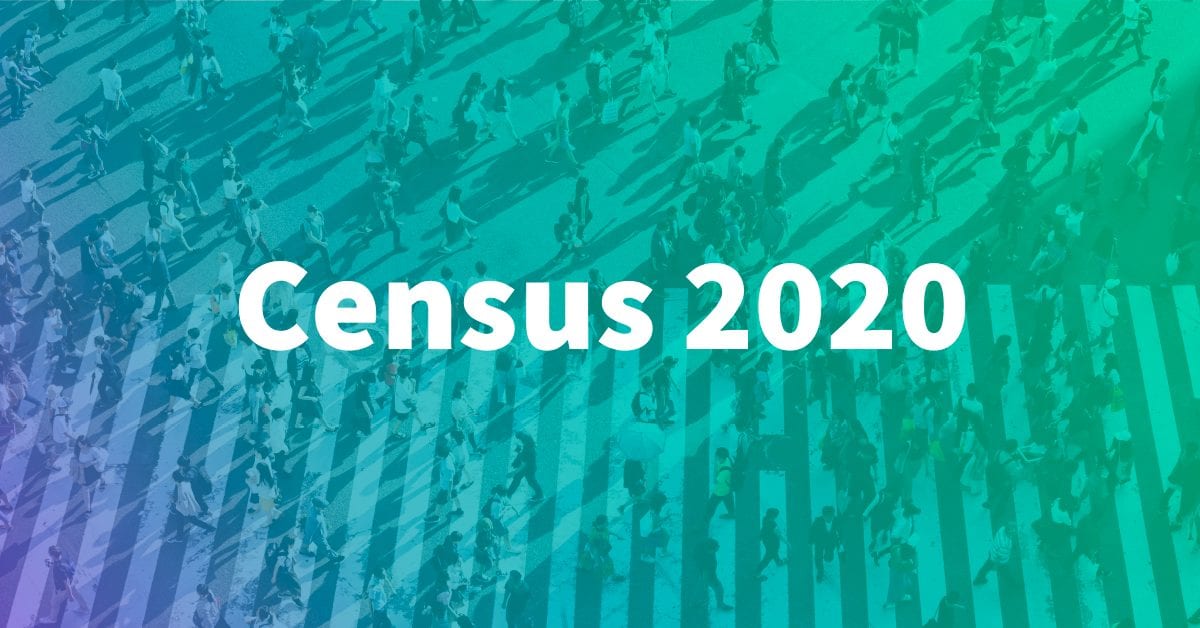How are Zencities Getting Ready for Census 2020?

Assaf Frances
Director of Marketing and Partnerships
Census 2020 is right around the corner and local authorities are gearing up for the biggest count of the decade!
To help your city evaluate and refine its approach to the 2020 Census, Zencity’s Urban Policy team spoke with some of its partners in 10 cities across the country (in combination with additional research). Below you will find a breakdown of Census 2020 innovative strategies and best practices, plus expected challenges and ways to resolve them.
Who is leading the Census 2020 efforts?

Mayors and City Managers are of course highly invested in the success of the census in their city. Yet in practice, in most of the cities that we spoke with, including Sanford FL, Pearland TX, and San Marcos CA, the communications department plays the main execution role. Typically, this department is in charge of the Census outreach efforts and usually leads the city’s Complete Count Committee (CCC). In other cities such as Houston, TX and Palmdale, CA the Planning Department is leading the way.
Nonetheless, the census is a municipal effort involving many other city departments, particularly those which are formally resident-facing. These city units are crucial, as they can rely on their well-established relationships with different communities, particularly with the hard to count populations (HTCP), to mobilize hyper-local advocacy for the census. Examples of this effort delegation in the cities that we spoke with, can be seen in the Community Development Department in Pearland, TX and the Public Engagement Division at the Mayor’s Office in Beaverton, OR.
Many cities are also adding census content and activities to various city events, and providing departments such as Parks and Rec, Public Works and more with census materials for their establishments (recreation and senior centers etc.) and resident-facing operations. As an example, the Public Works Department in Beaverton OR, will have the census campaign covering their vehicles. Palmdale, CA will also implement a campaign where the garbage trucks will be labeled with a large Census 2020 message. Libraries are also dominant census advocates and in many cities act as a leading facilitator by providing residents with internet access and assistance in filling out the questionnaire.
Who are cities partnering with outside of city hall, and how?

Counties
Census 2020 is all about collaboration and sharing. If you want to maximize participation, we recommend looking beyond internal capabilities. Particularly, the cities we spoke to noted a reinforced relationship between them and their respective counties. Cities such as Sanford FL, Fontana CA, and Beaverton OR, are relying in part on their county and other cities within it, for messaging, outreach materials, and funds so that resources can be pooled together and better spent. The city of Houston, TX shared that, “in 2010 we treated the census as an election campaign – we walked blocks, we shook hands, we kissed babies – and we realized there was no coordination with the county, they were coming to the same events… we knew we had to work in synchrony this time, and it’s working”. This is emphasized in the fact that the Complete Count Committee for Harris County and Houston is headed by both the Mayor and the County Judge.
Census Bureau
Another great strategic partner for your city is the Census Bureau itself. In our research, multiple cities had openly commended the bureau for improving tremendously from 2010. To ensure greater impact on this year’s census efforts, the Bureau’s online archive of materials is rich with relevant and easy-to-use content.
Community Groups and Organizations
Equally significant, many cities recognize that they must partner and support local, grassroots, faith and/or community-based organizations that have a closer relationship with the HTCP and are considered to be trusted voices in these communities. Examples of successful partnerships and support programs can be seen in cities such as Phoenix AZ, Philadelphia PA, and New York City, which award and fund such organizations for their help with direct Census outreach. More Ad-hoc relationships are also an excellent option. A great example of an impactful approach to ad-hoc partnerships can be seen between the city of Beaverton, OR and APANO (the Asian Pacific American Network of Oregon). The city invited an APANO representative to work directly from their offices and help with outreach efforts on a regular basis. This way, the city is able to consult with APANO regularly and the organization’s representative becomes a part of the larger strategic scheme for the Census.
In another case, the City of San Marcos is partnering with the National Latino Research Center to enlist their help with understanding how to best enable their Latino residents to share their information. In Houston, the city’s main partner is ‘Houston in Action’, a long-established local organization committed to increasing civic engagement and public participation. The organization released a census tool-kit that has plenty of relevant and usable materials for cities everywhere.
School Districts
School districts and schools themselves are also strategic partners when it comes to increasing census participation. In Beaverton OR, the city is planning to get the school districts’ help in reaching foreign-born and immigrant families through their children. In Houston TX, a peer-to-peer program enables high-school kids specifically to design the ‘right’ messages themselves and then serve as messengers back at home and in their community. Similarly, In Palmdale, CA, the city is working closely with the school districts on the state curriculum – a lesson plan for 5th, 8th, 11th and 12th grade so that kids can be better informed about the facts.
What is the message and who is the ‘best’ messenger for Census 2020?

Not surprisingly, “Count” is the most dominant word in all Census 2020 campaigns. Its variations and translations will soon dominate websites, social media posts, billboards, newspapers, radio, TV and Movie infomercials as well as hot air balloons (visit Houston, TX if you want to see it). Many cities, including San Marcos, CA and Sanford, FL, have also created comprehensive organic and paid digital marketing campaigns. This type of messaging aims to connect people to the bigger picture, their civic duty, representation and the impact being counted or not counted will have on their city and their daily life. Civis Analytics ran a very interesting experiment that tested 4 types of these messages and assessed their expected impact on response rate. The report revealed that the ‘Civic Duty’ message was the most impactful in getting people to respond to Census 2020.
Tailored Messaging with the Help of Focus Groups
Most cities realize that a good Census 2020 campaign needs to be multifaceted, multi-lingual and tailored to the countless variations of communities that it is trying to reach and influence. Houston and Harris County’s consultant ran several focus groups in different communities to understand which message resonates best and who would be the best messengers to convey them. “We needed to identify the considerations that would move someone to fill or not fill out the census, what are the motivations, fears, and how are the trusted voices make a difference in the community”. They realized that in many Asian communities, representatives of community centers and religious institutions are considered more convincing than formal governmental entities. They also learned that immigrant and non-citizen groups often associate fear with the Census, thus necessitating a tailoring in messaging.
Message Distribution
You can craft the “best message” for increasing Census participation, yet if you do not follow through with effective delivery, distribution, and messengers then the message will quickly get lost. Word of mouth and the trusted voices in each community will play a big role in getting the hard to count, counted. To understand who those people might be, thorough groundwork is required; walking the neighbourhoods, talking to people and connecting with key figures. In many cities, educational figures are known to be trusted the most to convey messages to children and their parents. In other places, they are specific shopkeepers, hairdressers and others who have long-lasting, daily and non-conventional encounters with residents. Bringing those messengers on-board is crucial for your campaign’s success. If your city didn’t have the time/resources to conduct this research far in advance, try utilizing the bureau-organized design-based workshop. It can provide great insights and practical solutions in a short time.
Cities’ concerns and solutions surrounding Census 2020

The Hard to Count Populations
Unmistakably, the main concern of cities is not having a correct 2020 count- in particular an undercount of the HTCP. There are several contributing issues to this concern, the primary two being: misinformation and disinformation. Specifically, cities have noticed significant misinformation and disinformation around privacy, cybersecurity and things like the ‘citizenship question saga’. Although these topics have never made it into the questionnaire, they are still causing harm to census count success. Other issues include:
- Misplaced communities (such as those in Houston’s post-hurricane Harvey) which will be harder to reach.
- The inherent digital divide that naturally excludes the hardest of the HTCP from answering online and the coinciding campaigns.
- Debates leading up to the presidential elections which can cause a “messaging mess” around issues of immigration, citizenship and more.
First Online Count
The fact that this census will also take place online presents new opportunities for cities that were not available before. This will allow cities to follow and respond in realtime to where the count is progressing slower than it should. In Houston, the city is planning to monitor the data each morning and revise their strategy and actions accordingly to get the numbers up on a tract basis. Many cities, including San Marcos, Palmdale, and Phoenix are planning to have stationary and mobile Census kiosks. In the first phase (January and February) the kiosks will continue with education efforts, while during the census itself the kiosks will assist people in filling out the questionnaire correctly.
Mis and Dis Information
When it comes to ‘mis&dis’ information the best strategy is simply constant census education. “Flooding” the channels with the right information should help drown out any potential rumors. Furthermore, arming your residents with this information in advance will turn them into natural advocates. That being said, information regarding the census might be considered dull by many. Some cities are taking a more playful approach, trying to make it fun and exciting. In Palmdale CA, bingo games in libraries and community centres are planned to engage the community and educate them regarding census facts.
Facebook and other social media channels such as Twitter and Youtube are also going to be helpful in the monitoring online rumors and discouragements to answer the census. Following events from the previous presidential elections, Facebook had pledged to ban ads that portray taking part in the census as useless or meaningless, including any misleading information. The question of how will organic posts, as well as comments, be monitored and removed, remains to be answered.
Census 2020 and Zencity
Bear in mind that strategically selecting and refining your Census 2020 initiatives are just the beginning. A city could create the most “innovative” Census 2020 project, yet release it without any ability to assess its full impact. Tracking your Census 2020 efforts and understanding which are “working” better for your community should be a priority within any city’s census playbook. As a Zencity partner city, you can obtain real-time insights from the Zencity platform on what your residents actually think about your Census 2020 campaign. As interactions regarding the census start accumulating on the dashboard, you will have a better understanding of how discourse and sentiment around the census change over time.
Moreover, by building specific projects in the dashboard, you can track the performance and effectiveness of your specific outreach campaigns and adjust messaging on the fly. Zencity’s insights and special curated reports will also allow cities to learn from best practice and resources elsewhere and tailor them to their situation. For the full list of how Zencity can help with census efforts, check out our guide.
Not one of our partner cities but want to learn more about how our technology can help your city? Book a personalized demo with one of our local government specialists.
%20copy-1.png?width=544&height=120&name=Logo_black%20(1)%20copy-1.png)



